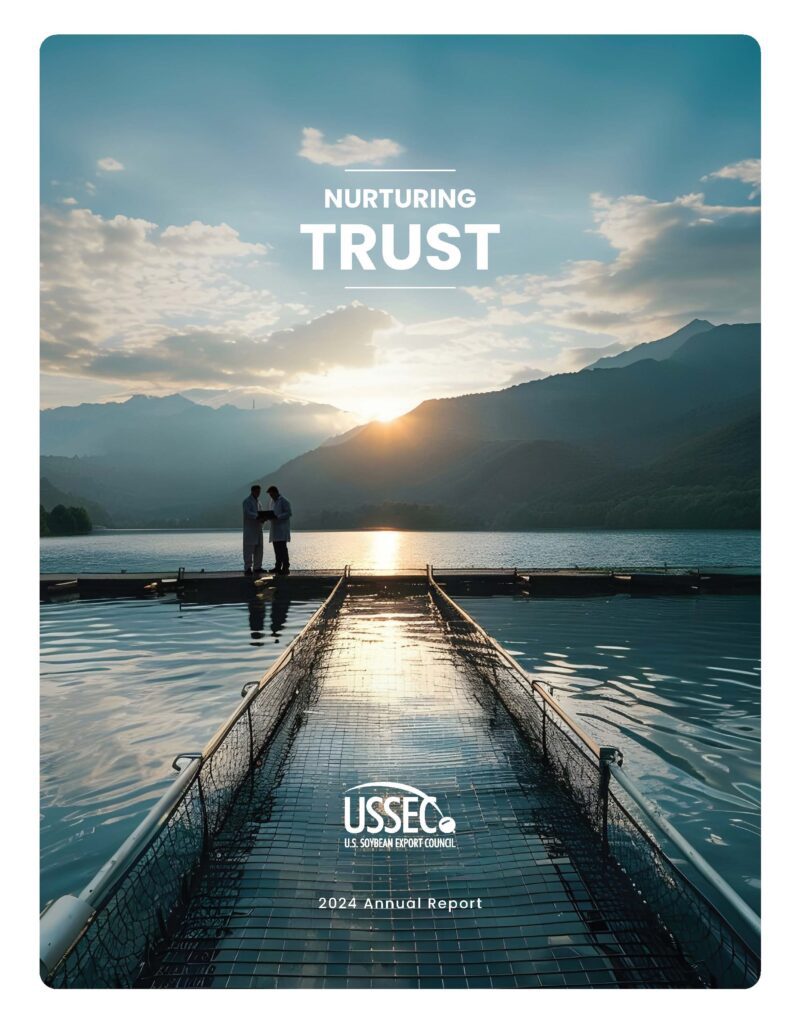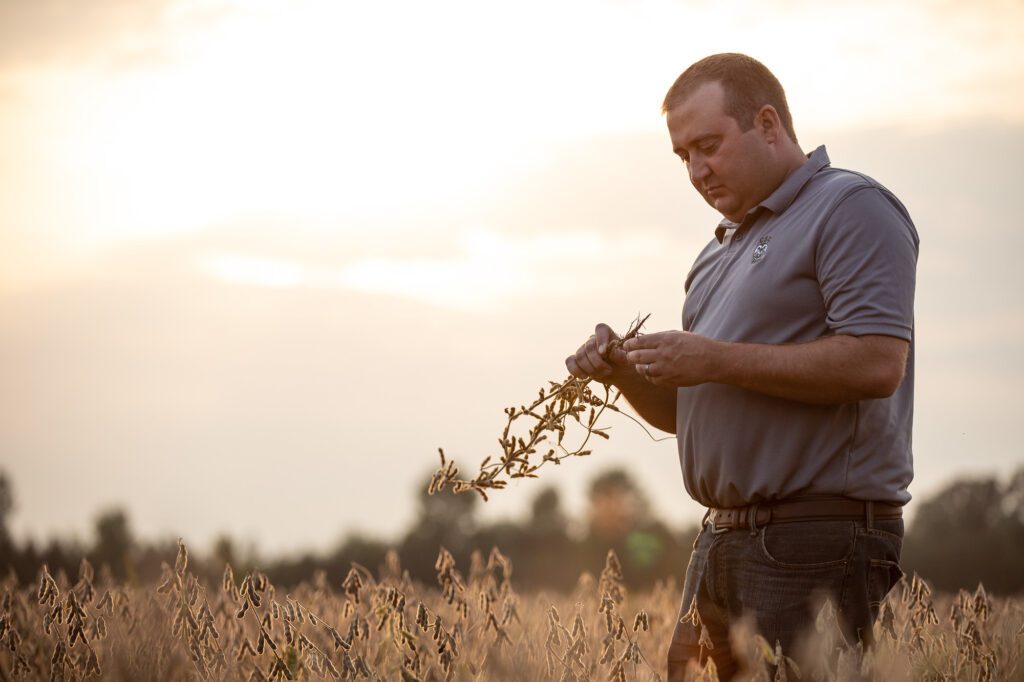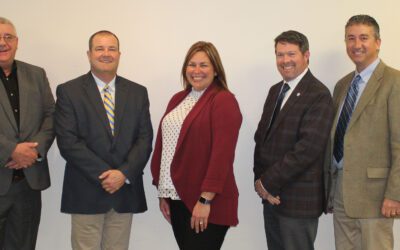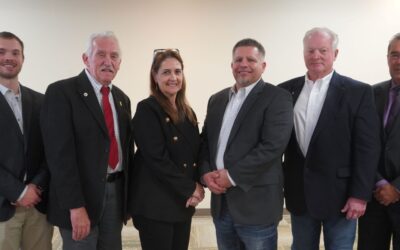Boosting U.S. Soy exports by accelerating sustainability and increasing connections
By Colby Pinkstone, senior director of strategic programs with the U.S. Soybean Export Council
The U.S. Soybean Export Council (USSEC) focuses on differentiating the quality and value of U.S. Soy for global customers, thanks in part to investments from the Indiana Soybean Alliance. We aim to create and elevate customer preference for U.S. Soy products.

Nurturing trust in U.S. Soy is at the heart of our work. Trust requires building, strengthening and deepening relationships.
Our team blends in-the trenches support and big-picture strategic insight throughout the global soy supply chain. Their collaboration and commitment create environments where relationships and trust flourish.
These relationships ensure that high-quality U.S. Soy, including Indiana soybeans, reach customers who use it to sustainably feed livestock and fish, nourish people and strengthen their businesses. Through these relationships, U.S. exports for marketing year 2023-24 totaled 60.8 million metric tons (MMT), valued at $31.2 billion.
“Exports help create demand for our soybeans,” said Mike Koehne, who farms near Greensburg, Ind., and serves as a director for the Indiana Soybean Alliance (ISA), the American Soybean Association (ASA) and USSEC. “I’ve experienced the value of the relationships USSEC is building with customers, both when I have visited customers overseas and when I have hosted trade teams on my farm. We learn so much from each other, and I’ve seen how much it means to our customers when we show up, listen, and want to learn.”
Our most recent USSEC annual report highlights a remarkable network of relationships that contribute to ongoing demand for U.S. Soy. For example, during the last marketing year, U.S. soybean meal exports set a record of 14.4 million metric tons, valued at $6.7 billion.
Explore our work in animal nutrition, aquaculture, soy foods and soybean oil that Indiana soybean farmers make possible in the full annual report.
Accelerating commitment to sustainability
Sustainability has become a critical priority for industries and companies around the world, and U.S. Soy has become an essential part of providing sustainable solutions.
The U.S. Soy Sustainability Assurance Protocol (SSAP) provides verification and trust in the sustainability of soybeans produced in the United States. More than 40.5 million metric tons of U.S. Soy products shipped with an SSAP certificate in marketing year 2023-24, covering two-thirds of total exports.
“Customers want to know how we care for our land while raising high-quality soybeans,” Koehne said. “The SSAP and USSEC’s focus on sustainability helps us explain that we raise soybeans with the lowest carbon footprint compared to those from other countries.”
SSAP certificates now carry data about the carbon footprint of verified soybeans, facilitating customers’ Scope 3 emissions reporting. This data uses life cycle assessment (LCA) information from the Global Feed LCA Institute (GFLI). USSEC is the first organization to use GFLI datasets this way.
Such transparency fosters trust in U.S. Soy. To pass this trust on to consumers, USSEC offers the Sustainable U.S. Soy and Fed with Sustainable U.S. Soy labels, which signify responsible sourcing with SSAP-verified soy. More than 1,120 products from 123 companies in 19 countries feature these labels.
USSEC is supporting global progress in sustainability, and that motivates our team to keep moving forward. The 2024 U.S. Soy Sustainability Assurance Protocol annual report explains how USSEC is accelerating its commitment to sustainability.
Investing in today for an abundant tomorrow
In addition to other export efforts, the Indiana Soybean Alliance directly supports the Soy Excellence Center (SEC) program led by USSEC. The SEC delivers trusted professional development for early- to mid-career protein professionals in emerging markets.

Protein demand around the world is projected to grow, and the SEC program is taking the lead in developing educational communities to meet these needs. SEC training builds trust, relationships, and knowledge, as researchers and experts from top U.S. and global universities support curriculum in poultry, aquaculture, and feed milling, as well as market-specific courses like swine production and food for human use.
“We are investing in the future of those who are and will deliver protein in emerging markets,” explained Joe Stoller, who farms near Bremen, Ind., and serves as an Indiana Soybean Alliance Board member. He also serves as Secretary on the SEC Global Advisory Panel, which provides guidance to the SEC. “Our support also cultivates preference for U.S. Soy, as participants learn how to maximize the value in our soybeans.”
The strategic learning centers provide virtual and in person training in the Americas, India, the Middle East and North Africa, Southeast Asia, and Sub-Saharan Africa. Explore how the SEC program is growing achievements, connections, and appreciation around the world in the 2024 Soy Excellence Center annual report.
Together, these reports strive to share the return on investment USSEC provides for the farmers that anchor the U.S. Soy supply chain through the Indiana Soybean Alliance and other partners.
Posted: March 21, 2025
Category: Indiana Corn and Soybean Post - March 2025, ISA, Market Development, News, Sustainability, USSEC



